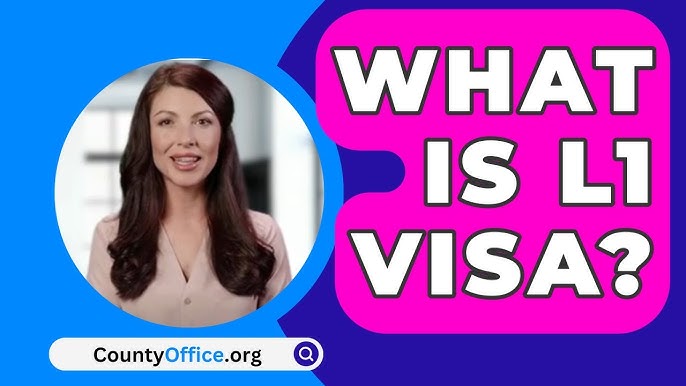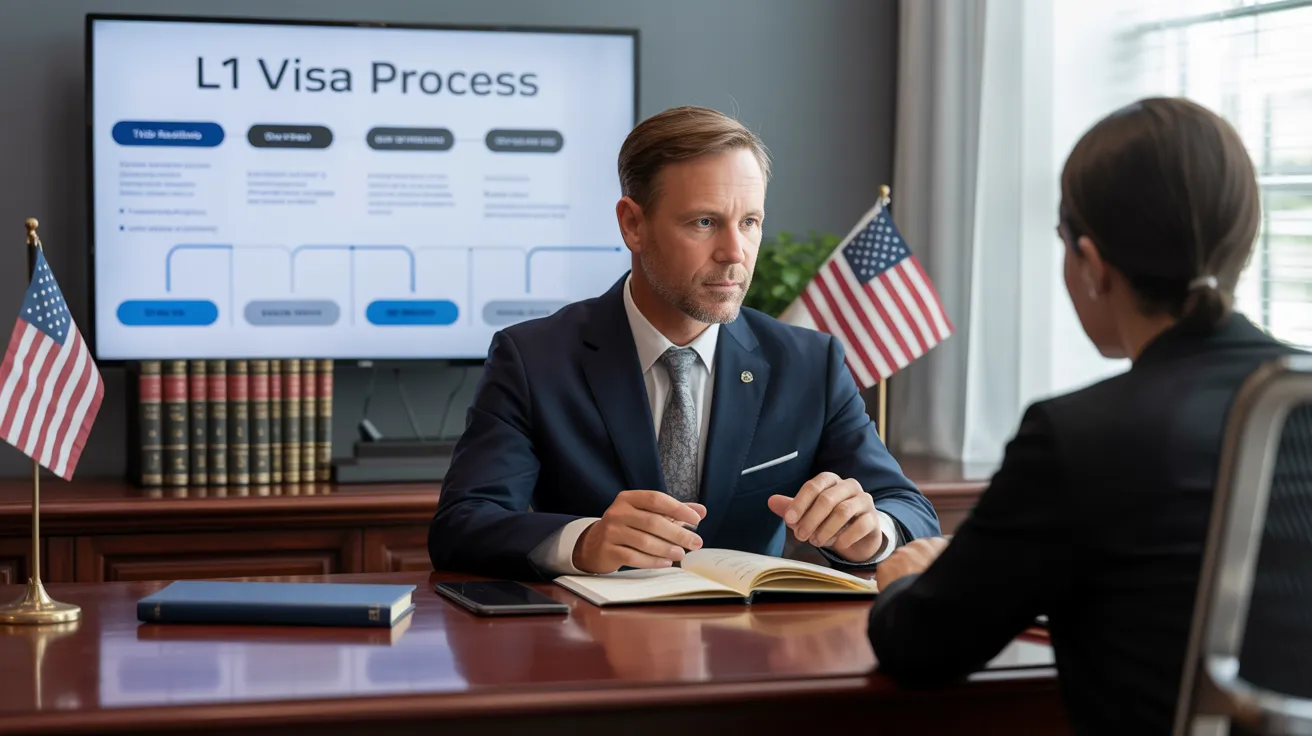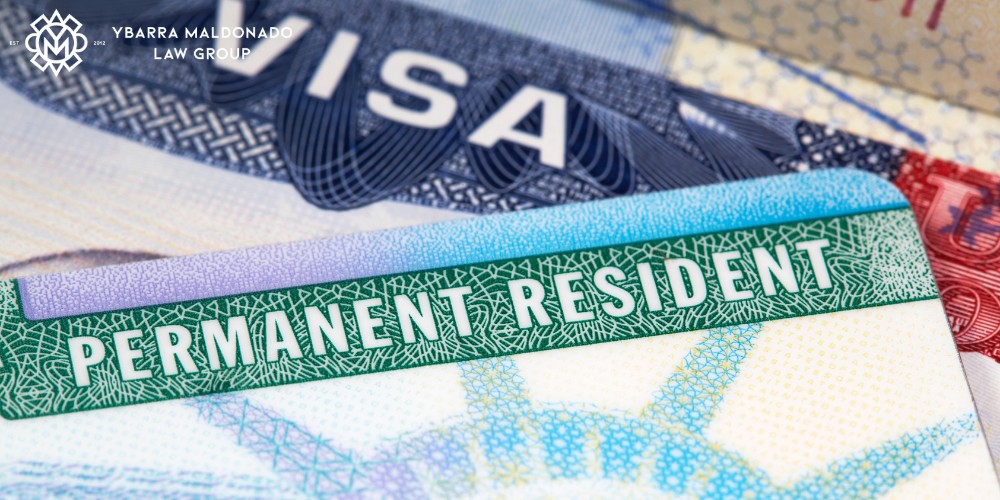Unlocking Opportunities: A Comprehensive Guide to the L1 Visa Process
The L1 visa process provides a vital pathway for multinational firms looking for to transfer crucial staff members across borders. Recognizing the nuances of eligibility criteria, the distinctions between L-1A and L-1B visas, and the intricacies of the application process can considerably affect an applicant's success. Maneuvering this facility landscape is not without its difficulties, and mindful interest to paperwork and employer sponsorship is necessary. As we discover the vital elements of this process, the techniques for getting rid of potential barriers will certainly become evident, exposing how informed prep work can open up a globe of opportunities.
Recognizing the L1 Visa
Recognizing the L1 visa requires acknowledging its importance as a crucial tool for multinational companies looking for to move competent employees in between worldwide offices. This non-immigrant visa group assists in the movement of execs, supervisors, and specialized understanding employees to the USA, therefore allowing organizations to preserve functional continuity and harness international talent effectively. The L1 visa is divided right into two key classifications: L-1A for supervisors and execs, and L-1B for staff members having specialized knowledge.The L1 visa serves an important duty in improving a business's one-upmanship in the global market - L1 Visa Requirements. By enabling business to move their essential workers, businesses can guarantee that important tasks are handled by certified individuals that are already acquainted with the company's culture and operational processes. This inner transfer device not just cultivates knowledge sharing however also advertises technology and partnership throughout borders.Moreover, the L1 visa is often favored for its fairly uncomplicated application process contrasted to various other visa categories, as it allows for double intent, allowing holders to go after long-term residency while on a temporary copyright. This feature makes the L1 visa particularly appealing for both employers and employees, as it simplifies the path for proficient specialists to establish long-term residency in the USA
Qualification Standards
Qualification for the L1 visa depends upon numerous essential requirements that assure both the worker and the employer meet details qualifications. This non-immigrant visa is made for multinational firms to move employees from consular services to U.S. counterparts.Firstly, the company needs to be a certifying company, that includes a moms and dad firm, branch, affiliate, or subsidiary of an U.S. company. The business should have been doing company for a minimum of one year both in the U.S. and abroad. This assures that the business has adequate functional stability and a legitimate presence.Secondly, the employee has to hold a managerial, executive, or specialized understanding position. For L1A visas, the applicant should demonstrate managerial or executive credentials, while L1B visas concentrate on specialized expertise related to the company's products, solutions, or procedures. In addition, the employee has to have functioned for the foreign entity for a minimum of one constant year within the last 3 years prior to their application.Lastly, the employee's function in the U.S. have to straighten with their previous placement, ensuring that their abilities and competence are leveraged for the company's benefit.
Kinds Of L1 Visas
The L1 visa classification makes up two main kinds developed to facilitate the transfer of employees within international business: the L1A visa for supervisors and execs, and the L1B visa for employees with specialized expertise. Each type offers distinctive objectives and has certain eligibility criteria.The L1A visa is customized for people who hold supervisory or executive positions within a firm. This visa makes it possible for high-level employees to transfer to a united state branch, subsidiary, or affiliate of the exact same company. Applicants for the L1A visa need to show that they have been utilized in a managerial or executive capacity for a minimum of one constant year within the past three years before their application. In addition, this visa supplies a much longer period of stay, initially provided for three years, with the possibility of extensions for approximately seven years.In contrast, the L1B visa is intended for professionals with specialized expertise associated to the firm's items, solutions, or procedures. To qualify, applicants should show that their knowledge is crucial to the organization and that they have functioned for at the very least one continual year within the last 3 years in a role that required this specialized expertise. The L1B visa is at first provided for three years, with extensions available for approximately five years.Both visa types are vital for business looking for to boost their international operations by leveraging knowledgeable workers, thereby promoting innovation and efficiency within the U.S. market.
Application Process
Steering through the L1 copyright procedure includes several crucial steps that must be diligently complied with to assure an effective outcome. The procedure starts with the united state company, who need to first develop qualification by demonstrating a certifying partnership with the foreign entity and confirming that the worker satisfies the particular demands for the L1 visa classification being sought.Once qualification is confirmed, the company starts the procedure by filing Form I-129, the Application for a Nonimmigrant Employee, with the U.S. Citizenship and Immigration Provider (USCIS) This type must be come with by a thorough description of the task obligations to be done, the organizational structure of both the U.S. and international entities, and the worker's credentials. It's important to verify that all information is precise and full, as noninclusions or mistakes can bring about delays or denials.Upon approval of the I-129 application, the next step involves the worker obtaining the L1 visa at an U.S. consular office or consulate in their home nation. This stage calls for the conclusion of Kind DS-160, the Online Nonimmigrant copyright, and scheduling a meeting. Throughout the meeting, the candidate must present evidence sustaining their certifications and the company's petition.After the visa is given, the worker can get in the United States to work in the designated duty. Overall, mindful prep work and adherence to each action of the application process are essential for a successful L1 visa result.
Needed Paperwork

Important Forms Needed
Steering the L1 Visa procedure needs careful attention to the essential types and documents essential for a successful application. The primary form required is the Form I-129, Application for a Nonimmigrant Worker, which must be finished and submitted by the united state employer. This kind outlines the information of the employment deal and the credentials of the worker seeking the L1 Visa.Alongside Type I-129, the candidate will certainly need to full Type I-539 if going along with relative are also using for visas. Additionally, the employer must provide evidence of the certifying partnership between the united state entity and the foreign entity, usually requiring the entry of corporate papers such as articles of consolidation or financial statements.Moreover, it is vital to include the L Category Supplement to Kind I-129, which specifies the type of L Visa being requested-- either L-1A for managers and executives or L-1B for workers with specialized knowledge. Lastly, candidates should assure that all kinds are signed and dated suitably, as insufficient entries can bring about hold-ups or denials. Correctly putting together these crucial forms lays the structure for a smoother L1 copyright process.

Sustaining Proof Requirements
Supporting documentation is important for an effective L1 copyright, as it confirms the cases made in the request. Applicants need to give a variety of documents to demonstrate qualification for the visa, which is categorized right into two primary types: proof of the certifying relationship in between the U.S. and international entities and evidence of the applicant's qualifications.To establish the connection, applicants should send paperwork such as corporate organizational graphes, monetary statements, and evidence of possession. These files verify that L1 Visa the foreign firm has a certifying partnership with the U.S. employer, whether as a moms and dad company, subsidiary, branch, or affiliate.For the candidate's credentials, essential records include a thorough employment letter from the international employer, outlining the applicant's work title, obligations, and duration of work. In addition, academic qualifications, such as degrees and diplomas, need to be given to show the candidate's experience in the relevant area.
Employer Sponsorship Papers

Common Difficulties
Maneuvering the L1 visa procedure offers a number of usual difficulties that applicants should be conscious of. Key concerns typically consist of rigid documentation demands, possible hold-ups in processing times, and the need for stringent legal conformity. Understanding these barriers can help applicants better prepare and minimize threats throughout their copyright journey.
Documents Demands
The L1 copyright procedure usually provides considerable obstacles connected to documentation demands. Candidates should give comprehensive paperwork to establish eligibility, which can cause complication and prospective hold-ups. Trick records include proof of a certifying connection in between the united state and foreign company, proof of the candidate's work background, and comprehensive info concerning the job role in the U.S.One common difficulty is gathering enough proof to demonstrate the nature of the qualifying relationship. Companies commonly battle to existing clear business graphes or economic declarations that show the connection in between the entities. Additionally, making certain that letters of support from companies properly show the applicant's task duties and certifications is essential, as unclear summaries can lead to denials.Another problem develops from the demand for comprehensive job summaries that line up with the L1 visa classifications. Candidates need to express not just their current role but likewise their managerial or customized knowledge duties clearly. This necessitates a complete understanding of both the candidate's setting and the governing language used in L1 applications.
Handling Dead Time
Experiencing hold-ups in processing times is an usual challenge dealt with by L1 visa applicants, often resulting in aggravation and unpredictability. A number of factors add to these delays, consisting of high application quantities, increased scrutiny of applications, and administrative backlogs within the united state Citizenship and Immigration Provider (USCIS) Applicants may locate that handling times can vary greatly depending upon the service facility managing their application, as each facility has its own work and efficiency degrees. Additionally, the complexity of the applicant's instance, such as the demand for considerable documents or information, can further prolong wait times.In some circumstances, concerns associated with the candidate's current immigration standing or previous visa history might also cause additional hold-ups, as USCIS may call for further testimonial or information. It is crucial for prospects to remain aggressive during this period, keeping open communication with their employers and legal reps to address any type of potential issues promptly.Understanding these handling time obstacles can aid L1 visa candidates get ready for feasible hold-ups and reduce the influence on their shift and profession strategies. Perseverance and persistance are important merits in navigating this complex process.
Legal Compliance Issues
Several L1 visa candidates encounter lawful conformity problems that can complicate their journey towards getting the visa. Understanding and adhering to the specific regulations established by the U.S. Citizenship and Immigration Services (USCIS) is important. Typical obstacles consist of showing the certifying connection between the international and united state employers, in addition to showing that the candidate possesses the requisite specialized understanding or supervisory capacity.Additionally, applicants have to give complete documentation describing their job obligations, company framework, and monetary stability of the U.S. entity. Inadequate or imprecise documents can lead to hold-ups or even denials. Companies have to likewise guarantee that they follow labor regulations, consisting of wage and working problem requirements, which can influence visa eligibility.Another typical issue entails keeping conformity with the terms of the visa once given. Adjustments in work standing, task obligations, or business structure can necessitate amendments to the visa, which if not resolved promptly can bring about legal complications. Therefore, remaining informed concerning compliance needs and seeking lawful advice when required is necessary to browse the intricacies of the L1 visa procedure effectively.
Tips for Success
Success in the L1 copyright process usually depends upon careful preparation and focus to detail. To enhance your chances of approval, start by thoroughly understanding the qualification demands for both the L1A and L1B visa categories. Evaluate whether your setting at the firm qualifies as supervisory, exec, or specialized knowledge, as this classification notably affects your application.Next, gather extensive paperwork that validates your cases. This consists of organizational graphes, comprehensive task summaries, and evidence of the company's operational framework. Clear and succinct evidence of the qualifying partnership between the united state entity and the foreign entity is essential. Validate that all papers are arranged logically and offered in an expert manner, as this shows your commitment and seriousness regarding the application.Engage the solutions of a knowledgeable migration attorney that specializes in L1 visas. Their experience can prove indispensable, directing you through complicated guidelines and ensuring that all documents follows present legislations. Furthermore, get ready for the interview by practicing response to common inquiries and preparing to review your duty and contributions to the firm detailed.
Regularly Asked Concerns
Can Household Members Go Along With the L1 Visa Holder?
Yes, member of the family of L1 visa holders, consisting of partners and single children under 21, can go along with the main visa owner. They might likewise make an application for L2 visas, which enable them to live in the USA.
The Length Of Time Can I Remain On an L1 Visa?
The L1 visa allows initial keeps of as much as three years, with the opportunity of expansion. L1A visa owners may stay for an optimum of seven years, while L1B visa holders can remain for five years.
Can L1 Visa Owners Get a Permit?
Yes, L1 visa owners can get a permit. L1 Visa. They might go after permanent residency through employment-based categories, generally calling for sponsorship from their company, given they fulfill the required qualifications and documents requirements
What Happens if My L1 copyright Is Rejected?
If your L1 copyright is rejected, you may obtain a notification describing the factors for rejection. You can look for to appeal the decision, reapply, or discover different visa choices based on your situations.
Are There Any Kind Of Traveling Limitations With an L1 Visa?
An L1 visa usually enables international travel; nonetheless, re-entry to the U. L1 Visa.S. rests upon maintaining legitimate status. Tourists need to ensure conformity with visa problems to avoid difficulties upon return
Final thought
